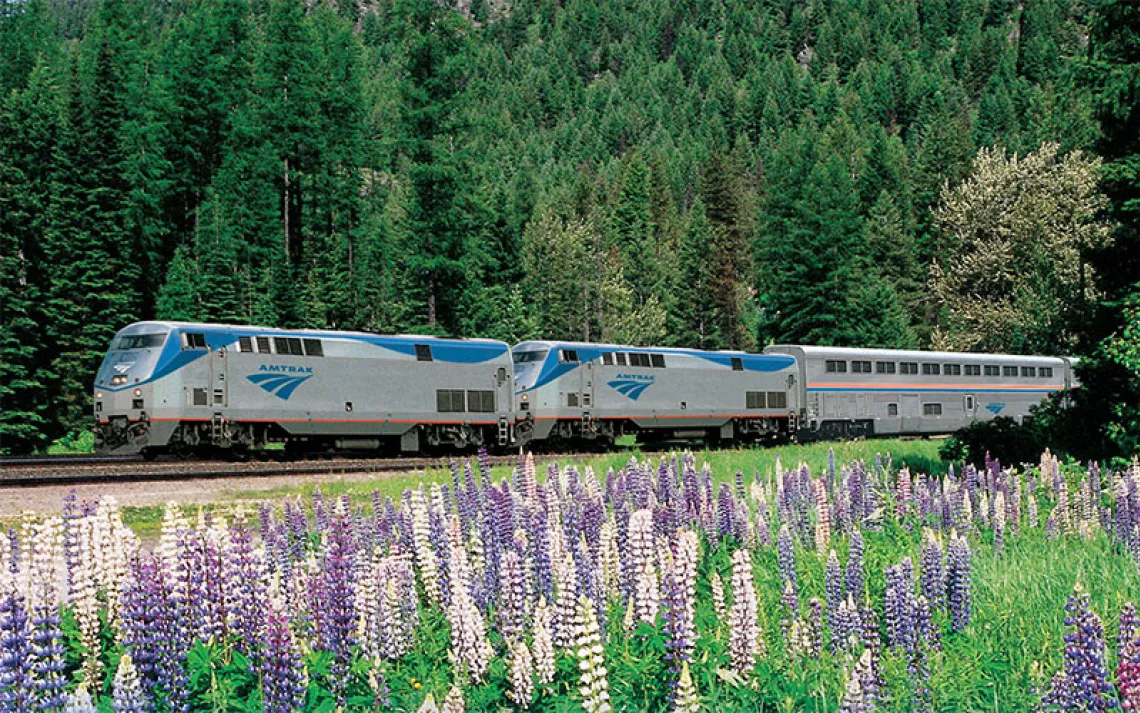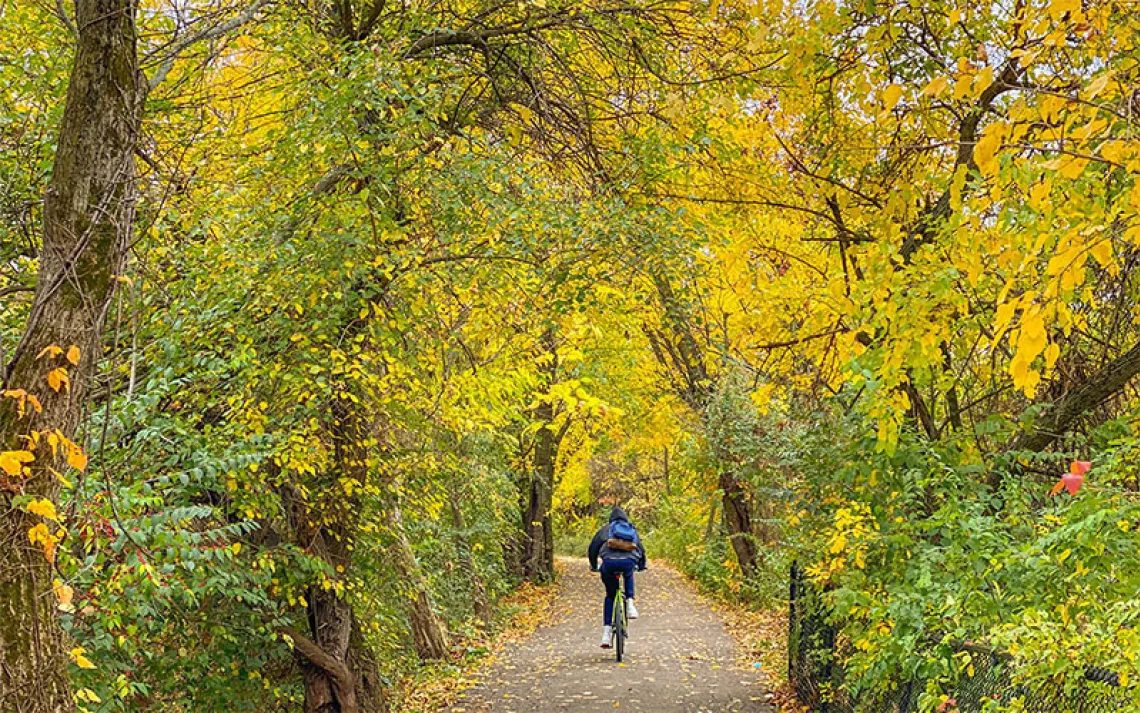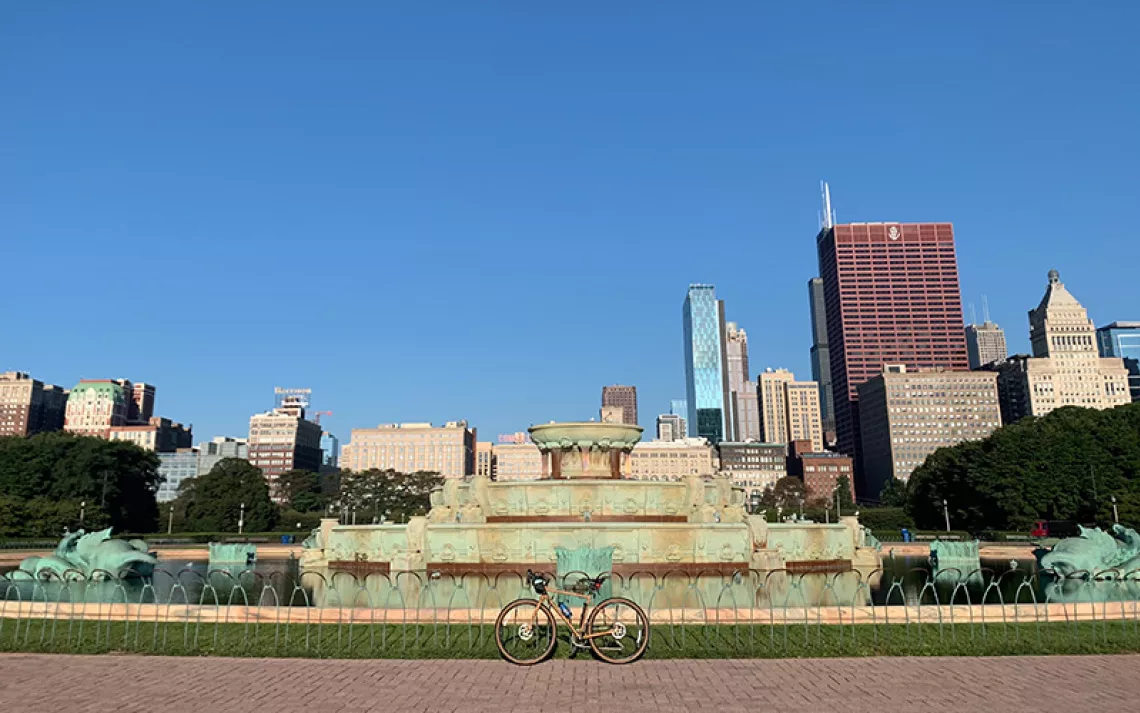We Are Traffic
Two hours in the life of a human bike lane

Photo courtesy of Audrey Nieh
The idea came to Maureen Persico while she was trying not to die on her bicycle. She was riding down Valencia Street in San Francisco on her way home from work, and just about every terrible thing possible was happening around her.
Cars drifted into the bike lane as though the drivers didn’t see the bicycle they were about to squish into a row of parked cars. Others pulled into the bike lane right in front of a moving bicycle and stopped abruptly. There were cars making right turns into the path of cyclists who had the right of way at a green light. Passengers flung open car doors and leapt into traffic without looking to see if anyone was in the bike lane first. Then there were the Uber drivers, parked in the middle of the bike lane, staring deeply into their smartphones—oblivious to all the mayhem around them.
Persico is on the road a lot. Part of her job at Scrap, a local nonprofit, involves pedaling a cargo bike all over the city to drop off donated supplies at local schools. She had tried everything in the civic playbook to get the city to do something about the transformation of bike lanes into “the parking we give Uber for free.” She went to meetings. She complained to every elected official she could think of. Last year, Persico helped stake out a section of Valencia during rush hour and documented every single traffic violation.
Among the findings: From 6 to 7 P.M., on just one side of the street, 53 cars blocked the bike lane, forcing 205 bikes to swerve into fast-moving traffic. The neighborhood police station was only a block away. During that time, two police cruisers drove by, and several police walked by on foot. No one got ticketed.
At the moment, I’m standing next to Persico on Valencia Street during peak commute hours, and there are exactly no cars in the bike lane. This is because Persico and a crew of friends, friends of friends, people who heard about this on the internet, and random passersby are standing in a line in the middle of the street, delineating the boundaries of the bike lane with their bodies. “I have lived in San Francisco for 26 years,” shouts Persico over her shoulder, ringing a cowbell that she brought from home to liven up the protest. “Our forefathers fought for this bike lane! We can’t just surrender it to Uber!”
The light turns green, and a flock of cyclists sail through the intersection: a guy with a growler of beer strapped to his bike basket, a blond woman pedaling a cargo bike with an equally blond kid strapped to a seat in the back, a woman in stylish, high-waisted pants who looks like she was just dispatched from the set of Mad Men.
When they reach the human-protected bike lane, they look stunned, then delighted. “Wooo!” yells Persico in encouragement. “Protected bike lane!” The cyclists sail past, several high-fiving the length of the human bike lane as they go. “Thank you, heroes,” one older man in a suit jacket says in a smooth, TV-announcer voice while pedaling through the crowd. “Dr. John says, “Thank you.”

Photo courtesy of Audrey Nieh
Behind Persico, a Prius with an Uber sticker pulls up and disgorges three guys in business casual. Persico turns around. “I just know you wouldn’t have parked in the bike lane, would you?” she says sweetly to the driver. The driver looks up from his cellphone, guiltily.
Persico wheels back around, ringing her cowbell. “Wooo! Protected bike lane! Feeling fine, like good wine! More cowbell!”
Across the street, a black car pulls into the bike lane and parks. Perscio rings the cowbell at him vigorously. “Hey you! Yes! Yes! I’m talking to you! You’re in the bike lane! Yes you!” A police car drives by slowly, taking in the spectacle, and then drives away.
Persico is not so much trying to get police to enforce the bike lanes as to just engineer risky car/bike interactions out of the streetscape entirely. Protected bike lanes—the kind that use some kind of barrier to separate bike and car traffic—are increasingly popular in other American cities like New York, Portland, and Minneapolis, in part because they get people on the road who would otherwise be too scared to bike in the city.

Photo courtesy of the National Association of City Transit Officials (NACTO)
In San Francisco though, local government seems unclear on the concept. The mayor’s enthusiasm for parking his Chevy Volt in the middle of bus stops and crosswalks is well documented. Plans for a protected bike lane on Polk Street, another major bike traffic route, were mothballed after the mayor’s optometrist objected to losing a parking space in front of his business. A recently installed protected bike lane farther down Valencia was so confusingly designed that it quickly filled up with cars that mistook it for parking spaces. On the most recent Bike to Work Day, the head of the San Francisco Department of Public Works posted a photo of the mayor biking down Valencia with a police escort, accompanied by the caption, “I like protected bike lanes.” Was it possible that the head of DPW didn’t even know what a protected bike lane was?
A taxi drives up, and the driver leans out the window. “You keeping Uber out of the bike lanes?”
“Yeah,” says one of the protestors.
The driver gives an approving nod. “Good,” he says. “I don’t trust those guys.”
Before TNC cab companies like Uber, in the olden days of five years ago, there were about 1,800 permitted taxis roaming San Francisco, most of them downtown. Now, according to the San Francisco Treasurer’s Office, there are 37,000 active Uber and Lyft drivers in San Francisco, none of whom were required to attain the same level of training as regular taxi drivers. In order to get licensed, San Francisco cab drivers have to attend classes on traffic law and pass a driving test before hitting the road. Uber drivers fill out forms online and watch a few safety videos.
A radio reporter who’s been interviewing Persico asks her who else in the human bike lane he should talk to. She thinks for a minute. “Go find someone a little schlumpy. Not everyone is a fit bro who rides.”
The human bike lane was about half a block long when it started at 5 P.M.; an hour later it stretches down the length of an entire city block. A schoolteacher named Monica Padilla-Stemmelen is one of the new arrivals. She was walking to the bus with a bag of groceries when she saw the protest and joined in. “I used to live in this neighborhood,” she says, adding that she went blocks out of her way to avoid the traffic on this street.
Like everyone in the line, she was handed a yellow T-shirt with a logo of a little person riding a bike sporting a babyseat on the back, with the text, “Protected Bike Lanes Save Lives.” Matt Brezina, the person handing out the shirts, created them with a former coworker, Zain Ali, a designer at Instacart. Brezina, a tech entrepreneur, met Persico on Twitter, where both of them post about dangerous bike conditions around the city. As political actions go, this has been a budget affair. The biggest expense has been $450 in T-shirts.
Getting involved in local governance is one way that Brezina has found to deal with the emotional fallout of the last presidential election. Covertly installing planter boxes on city sidewalks is another. “It’s so frustrating; I just need to do something,” says Brezina. “So I’ll go build a planter box, or clean an old lady’s windowsills.”
An Uber pulls up behind Brezina, and the passengers climb out, looking confused. Brezina runs over to explain. “Cars need to park here,” he says, pointing down the traffic lane that the car was forced to stop in, since the bike lane wasn’t an option. “It’s safer.” A man with a magnificent silver pompadour who has just gotten out of the back of the Uber looks momentarily confused, then nods. “I support that,” he says, raising his hand for a high five.
“The Ubers have been so nice,” says one protestor.
“What choice do they have? Homicide?” says Madeleine Savit. Savit was at the forefront of the movement to put protected bike lanes on Polk, and she’s the section of the human bike lane that is the most on-point with political messaging. “Ask the city for better!” she yells to a cyclist who pedals by. “Tell the city you want safer infrastructure!”
“This city will be among the first to be impacted by rising sea levels,” Savit says, as an aside. “We just can’t keep on doing things the way we’ve been doing them.”
It’s nearly 7 P.M., and it’s getting cold. The bike lane has shrunk to about three-quarters of the block. As people leave, they take off the bright-yellow T-shirts and put it in a box, for use by the next human bike lane. All in all, a group of humans protected bike traffic on one block for two hours. As the lane drifts apart and reconverges on the sidewalk, I watch the now-unprotected bike lane to see how long it takes for a car to pull up and park in the middle of it.
It takes four minutes.
 The Magazine of The Sierra Club
The Magazine of The Sierra Club



